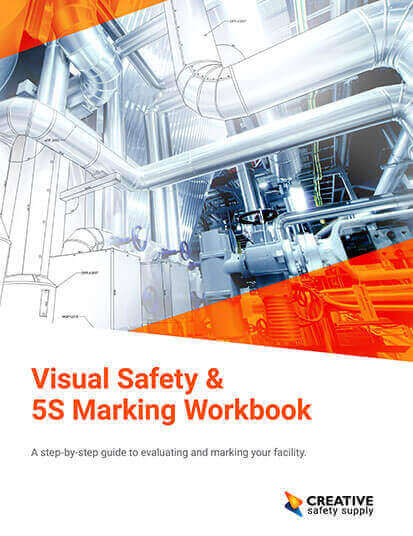
Visual Safety
A visual workplace is a work environment where information, instructions, and warnings are communicated through visual cues, such as signs, labels, floor markings, color codes, and symbols. A visual workplace can help improve safety, productivity, quality, and efficiency in any business or manufacturing setting. One of the key elements of a visual workplace is facility marking, which is the process of applying markings to various surfaces and objects in the workplace to convey important information. Facility marking can help identify hazards, designate work zones, indicate traffic flow, provide directions, and more. But how can you use facility marking effectively to create a more visual and safer workplace? Here are some tips and best practices to follow:
Conduct a facility assessment
Before you start applying any markings, you need to assess your current facility and identify the areas that need improvement. You can use tools such as 5S, Gemba walks, or Kaizen events to evaluate your workplace and find out what information is missing, unclear, or outdated. You should also involve your employees in the assessment process and get their feedback and suggestions.
Choose the right marking products
There are many types of facility marking products available in the market, such as floor marking tape, floor signs, wall signs, pipe markers, safety labels, and more. You need to choose the products that suit your needs and preferences. Some factors to consider are durability, visibility, ease of installation and removal, cost-effectiveness, and compliance with standards and regulations.
Follow a color-coding system
One of the best ways to make your facility marking more visual and effective is to use a consistent color-coding system throughout your workplace. Color-coding can help create contrast, highlight important information, and reduce confusion. You can use colors to indicate different types of hazards, work areas, equipment status, inventory levels, and more. You can follow the standard color codes recommended by OSHA or ANSI, or create your own custom color scheme based on your specific needs.
Use clear and concise messages
Another important aspect of facility marking is the content of the messages that you display on your signs, labels, and markings. You need to make sure that your messages are clear, concise, accurate, and relevant. You should avoid using jargon, abbreviations, or acronyms that might confuse your employees or visitors. You should also use simple and easy-to-understand symbols or pictograms whenever possible to supplement or replace text.
Review and update your facility marking regularly
Facility marking is not a one-time project; it is an ongoing process that requires regular review and update. You need to monitor the condition and effectiveness of your markings and replace or repair them as needed. You also need to keep up with any changes in your workplace layout, processes, equipment, or regulations that might affect your facility marking. You should conduct periodic audits and inspections to ensure that your facility marking is always up-to-date and compliant.
By following these tips and best practices, you can use facility marking to create a more visual and safer workplace for your employees and customers. Facility marking can help you enhance communication, reduce errors, prevent accidents, improve efficiency, and foster a culture of continuous improvement in your organization.
Similar Questions
- What are the Benefits and Best Practices of using Color-Coding for labels and signs in Facility Marking?
- What are the Benefits of Floor Marking Tape for Safety and Productivity?
- What are the Best Facility Marking Techniques?
- What is Facility Marking?
- What are the Best Practices for Installing and Maintaining Facility Marking Products?
- How does Facility Marking Improve Safety Awareness and Navigation?
- How can I prevent Warehouse Accidents with Facility Marking?

